Many gardening enthusiasts are turning to Deep Water Culture (DWC) for its efficient hydroponic method that promotes rapid plant growth. In this informative blog post, he will explore how they can build a budget-friendly DWC system for under $50, utilizing easily sourced materials and simple techniques. She will highlight key components such as the reservoir, air pump, and net pots, ensuring a sustainable approach that maximizes yield while maintaining low costs. With this practical guide, they can commence on a rewarding gardening journey without breaking the bank.
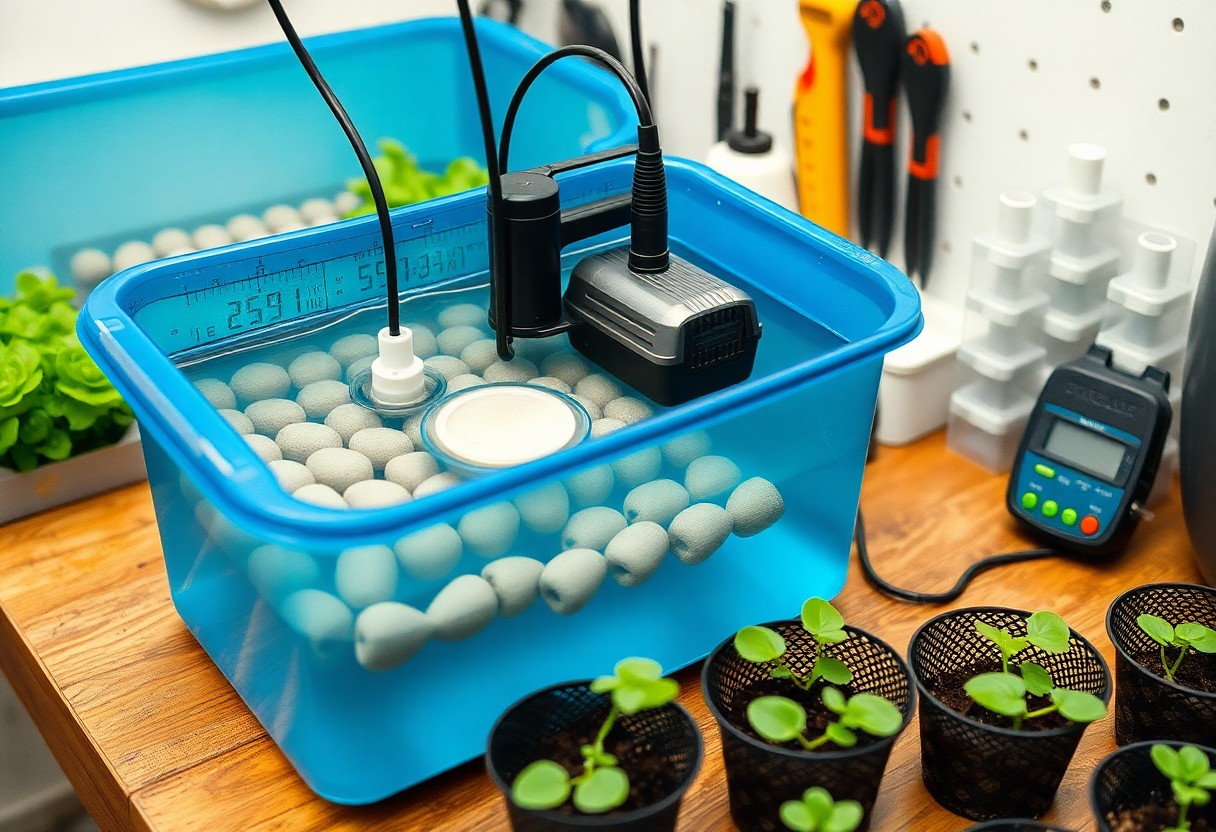
Key Takeaways:
- DIY Deep Water Culture (DWC) systems can be built for under $50 using affordable materials and equipment.
- Essential components include a container for the reservoir, air pump, air stone, net pots, and a nutrient solution.
- Maintaining proper pH and nutrient levels is vital for healthy plant growth in a DWC setup.
- Consider using beneficial bacteria or additives to enhance root health and prevent disease in your system.
- Regular monitoring and adjustments are important to ensure optimal conditions for your plants.
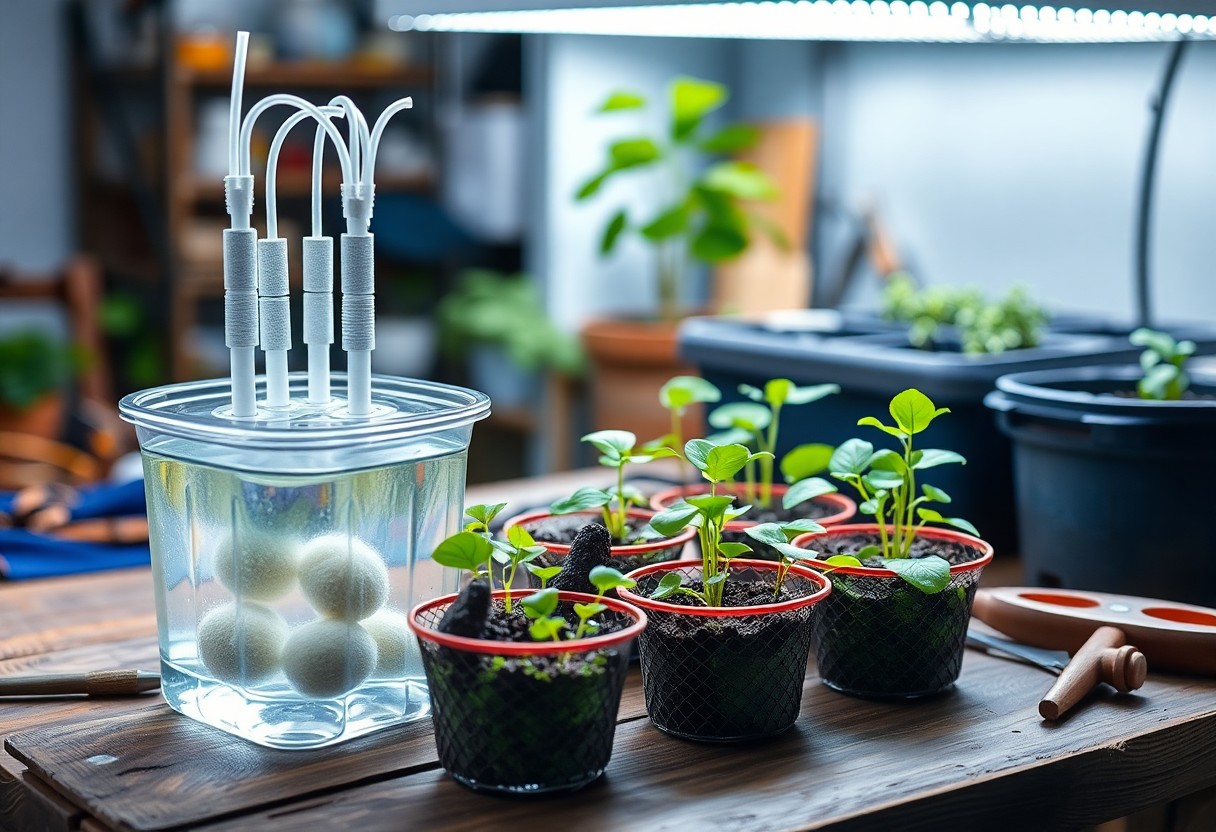
The Fundamentals of Deep Water Culture
What Makes DWC Unique Among Hydroponic Methods
DWC stands out among various hydroponic systems due to its simplicity and effectiveness. In this method, plant roots are suspended directly into nutrient-rich, oxygenated water. This direct access allows plants to absorb necessary nutrients at a rapid pace, promoting faster growth than traditional soil gardening or even other hydroponic techniques. Users often observe significant increases in yield, with some claiming up to 25%-30% more produce compared to other methods. The ability to quickly adjust nutrient concentrations gives growers a unique edge, allowing them to adapt to the specific requirements of different plant species efficiently.
Elements such as the use of air stones and a consistent water temperature play significant roles in optimizing growth. Aeration not only ensures that roots receive adequate oxygen but also promotes beneficial microbial activity within the water. This unique approach to nutrient delivery is particularly appealing to beginners, as it reduces the likelihood of overwatering or nutrient runoff often experienced in soil-based gardening.
The Science Behind Oxygenation in DWC Systems
Effective oxygenation is one of the primary factors influencing plant health in DWC setups. In a submerged environment, plant roots are prone to suffocation without proper oxygen levels, leading to root rot and diminished growth. Oxygen is vital for root respiration, facilitating the efficient uptake of nutrients. Many experienced growers employ air pumps and air stones to introduce air bubbles into the nutrient solution, ensuring that oxygen is adequately dissolved and readily available, thereby enhancing overall root health.
Studies indicate that a dissolved oxygen level of 6-8 mg/L is optimal for plant roots in a DWC system. When levels drop below this threshold, plants can experience stress that manifests in various ways, including wilting or yellowing leaves. Continuous aeration not only keeps oxygen low but also helps maintain consistent water temperature, further promoting a healthy growing environment. This dynamic relationship between oxygenation and plant health is why proper aeration is considered a cornerstone of successful Deep Water Culture gardening.
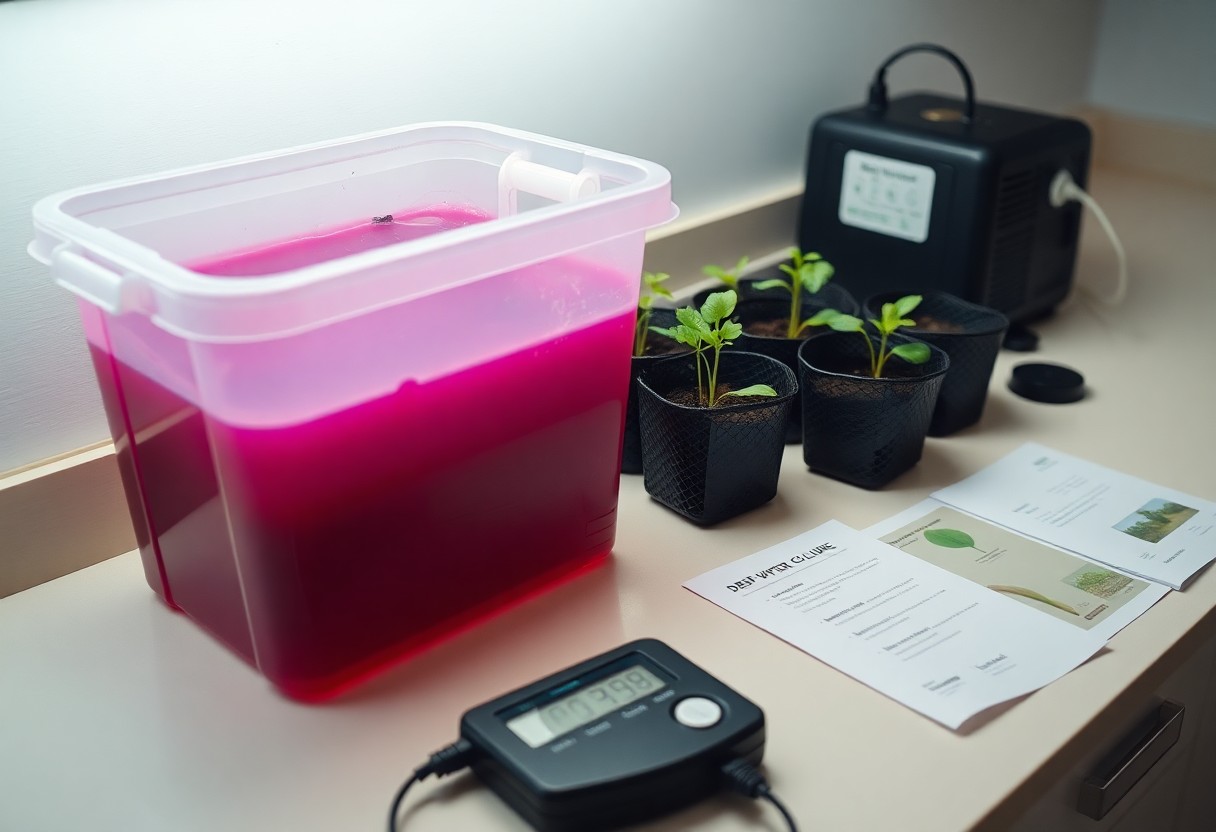
Budgeting Your DWC Setup: Costs and Savings
Breaking Down the $50 Budget
Constructing a Deep Water Culture (DWC) system for under $50 requires meticulous planning and knowledge of where to allocate funds. The core components of a DWC setup include a reservoir, an air pump, an air stone, net pots, and a growing medium. A simple plastic container can serve as a reservoir, typically costing around $10. An air pump with an adequate output may range from $15 to $20, while air stones can be relatively inexpensive at approximately $5 to $10. Net pots and hydroponic growing medium can be sourced for around $10, rounding out the budget nicely without overspending.
Allocating the budget effectively can allow for flexibility in choosing higher quality equipment where needed. For example, investing slightly more in a durable air pump could enhance oxygenation and ultimately lead to better growth rates for plants. The careful recalibration and tweaking of the budget ensure that even novice growers can piece together an effective DWC system without sacrificing quality.
Sourcing Affordable Materials: Creative Solutions
Finding economical materials to build a DWC system can lead to substantial savings, allowing DIY enthusiasts to stretch their $50 budget even further. For example, a wide variety of containers can serve as reservoirs; he or she can repurpose an old plastic storage bin or a food-grade bucket sourced from local deli or bakery establishments. This recycling not only saves money but also reduces waste.
Moreover, community resources such as local gardening groups often trade supplies, enabling individuals to acquire net pots or previously used growing mediums at little to no cost. Thrift stores and online marketplaces, such as Craigslist and Facebook Marketplace, also present opportunities to find excellent deals on unused gardening equipment. Investigating local businesses that are eager to offload excess inventory can yield great results for budget-conscious individuals.
Searching for alternative solutions does not stop at just reservoirs and pots. Many gardeners utilize materials like rubber bands instead of expensive net pot lids or substitute typical growing mediums with locally available options, such as coconut coir, which is affordable and eco-friendly. They can also make their own air stones from materials like PVC or sponge, showing that ingenuity plays a key role in budget-friendly DWC setups.
Essential Components of a DIY DWC System
Choosing the Right Container: Size and Material Considerations
Selecting an appropriate container serves as the foundation for a successful DWC system. Containers can range from plastic totes to large buckets, but they must be opaque to prevent light from reaching the nutrient solution, which could encourage algae growth. A common size for beginners is a 5-gallon bucket, providing ample space for root development while remaining manageable for transport and maintenance. When considering material, food-grade plastic is preferred to ensure harmful chemicals do not leach into the nutrient solution. In addition to size and material, the depth of the container plays a significant role in the health of the plants. A deeper container allows for better root anchoring and ensures that roots can reach the oxygen-rich water supply easily. Alternatively, shallow containers may require more frequent water changes and can risk exposing roots to air during peak growth phases. Balancing size and depth with the type of plants being grown leads to optimal growth conditions.Aeration Techniques: Pumps and Diffusers Explained
Aeration remains a cornerstone of DWC systems, providing the necessary oxygen for root health and nutrient absorption. An aquarium air pump, often found for under $20, powers aeration, delivering bubbles to the nutrient solution effectively. The type of pump selected can significantly impact efficiency; higher-quality pumps tend to produce more consistent air output and last longer. Along with pumps, air diffusers play an necessary role in dispersing air evenly throughout the nutrient solution. Typically available in various shapes and sizes, air stones, made from porous materials, create fine bubbles that increase the surface area of the air, enhancing oxygen transfer. Pairing a powerful pump with a well-distributed air stone can lead to a vibrant and healthy root environment, optimizing growth potential. More sophisticated designs, such as multiple air stones per container or even larger, high-capacity pumps, can be considered as the grower’s experience grows. Adjusting the aeration approach based on plant species and growth stages can lead to improved yields and a more efficient DWC setup.Nutrient Solutions: Finding Cost-Effective Options
Choosing affordable and effective nutrient solutions is vital for sustaining plant health in a DIY DWC system. Hydroponic nutrient solutions specifically designed for use in water culture can be found at local gardening centers or online retailers. Growers can opt for premixed solutions or powdered formulations that can be diluted in water. Many brands offer budget-friendly options without compromising quality. For instance, brands like General Hydroponics and Botanicare have entry-level solutions suitable for beginners. Additionally, local gardening clubs or online forums often share bulk purchasing options or homemade recipes for nutrient solutions, allowing a DIY enthusiast to save even more money. Exploring alternative nutrient sources, such as worm castings or compost teas, can further reduce costs, although these require a bit more management to ensure they are balanced properly for hydroponic use. When considering nutrient solutions, factoring in the specific needs of the plants helps in deciding the right mixture. Many growers will discover that a simple nutrient solution formulation suffices for a wide variety of plants, making it easier to manage costs without sacrificing the health and growth of their crops.Step-by-Step Guide to Assembling Your System
| Step | Description |
| 1. Prepare the Container | Drill holes and assemble your reservoir correctly for optimal results. |
| 2. Set Up the Aeration System | Install the air pump and stone to promote oxygen exchange in the nutrient solution. |
| 3. Choose Your Net Pots | Select appropriate pots for your plants to ensure adequate support and drainage. |
| 4. Fill the Reservoir | Add water and nutrients to your system, ensuring the right mix for your plants. |
| 5. Plant Your Seeds | Introduce your chosen seeds or seedlings into the system for growth. |
Preparing the Container: Drilling and Assembly
Begin the process by selecting a suitable container, typically a plastic bucket or tub with a lid that can hold at least 5 gallons of nutrient solution. Drill holes in the lid to accommodate the net pots. The holes should be approximately 3-4 inches in diameter to allow sufficient space for roots to grow down into the nutrient solution. When assembling, ensuring the container is clean is vital to prevent the introduction of harmful pathogens.
After drilling, insert the net pots into the holes in the lid securely. A good fit ensures that the pots stay in place but still allows the roots to draw from the nutrient solution underneath. Utilizing a sealing tape around the edge can help prevent leaks while maintaining structural integrity. This reduces the chance of contamination and enhances system longevity.
Setting Up the Aeration System: Best Practices
The success of a DWC system heavily relies on its aeration setup. The air pump should be placed above the water level to prevent water from siphoning back into it. Connected to the pump, the air stone should be placed at the bottom of the reservoir to effectively diffuse the air into fine bubbles. Doing this promotes maximum oxygen exposure for the roots, which supports healthy plant growth.
When choosing an air pump, he recommends selecting one rated for at least double the airflow needed for the volume of water in your system. This extra capacity ensures that your plants receive sufficient oxygen, especially during hot weather or rapid growth phases.
Taking the time to ensure an adequate aeration system can that reduce the risk of root rot and other diseases commonly associated with stagnant water. Regularly check for clogs in the air stone and clean it every few weeks to maintain optimal performance.
Planting: Choosing Seeds for a Successful Start
Successful DWC gardening starts with selecting the right seeds. Popular choices for beginners often include leafy greens like lettuce or herbs such as basil and cilantro due to their faster growth rates and ability to thrive in nutrient-rich water. For those looking to grow larger plants, tomatoes and peppers can be optimal choices if the system is well-designed and managed.
Choosing quality seeds from reputable sources can lead to greater success. It’s advisable to soak the seeds before planting to boost germination rates. The careful selection of seeds takes into account growth patterns and compatibility with the DWC environment, ultimately helping to ensure a bountiful harvest.
In addition to selecting seeds based on growth preferences, understanding the light and nutrient requirements for each can help in effectively managing the DWC system. Pairing seeds that thrive under similar conditions can streamline the process and maximize yield.
Maintenance Hacks for Budget Growers
Monitoring pH Levels without Breaking the Bank
Budget growers often face challenges when it comes to monitoring pH levels in their Deep Water Culture systems. Fortunately, one can create a reliable pH monitoring system using inexpensive materials. By utilizing pH test strips available at garden centers or aquarium supply stores, they can obtain results for as little as a few dollars. These strips provide a visual color match that indicates acidity, allowing growers to adjust their nutrient solutions accordingly. Using a designated container to mix the nutrient solution can simplify the process and reduce contamination risks.
If she prefers a more precise measure, investing in a basic pH meter can be beneficial. While some high-end models can cost over a hundred dollars, there are budget-friendly options that offer adequate accuracy for personal use. Regular calibration with standard solutions maintains the reliability of the meter, ensuring they accurately monitor the pH levels for optimum plant health.
Preventing Algal Growth: Tips for Clean DWC
Algae can be a persistent adversary in Deep Water Culture systems, thriving in conditions with ample light and nutrient availability. To combat this, he should address lighting issues first. Since algae require light for growth, covering the reservoir with opaque materials not only hinders light penetration but also helps keep the water temperature stable. Dark-colored containers, or wrapping existing containers in black plastic, are effective methods for light exclusion.
- Cover reservoirs with opaque materials
- Regularly change water, typically every two weeks
- Utilize beneficial microorganisms or enzymes
- Monitor nutrient levels to ensure balance
Assume that integrating these practices into a regular maintenance schedule will significantly reduce algae presence. Regular maintenance combined with preventive measures creates a cleaner, healthier environment for plants.
In addition to blocking light, he should also ensure proper aeration to discourage algae growth. Maintaining high dissolved oxygen levels through effective air pump systems is crucial for plant health and can contribute to an unfavorable environment for algae. Furthermore, incorporating beneficial microorganisms can outcompete algal spores, effectively serving as a natural deterrent and promoting overall plant vitality.
- Invest in quality air pumps for better oxygenation
- Use beneficial microorganisms for cleaner water
- Balance nutrients to limit excess growth
- Establish a cleaning routine to maintain reservoir cleanliness
Assume that these methods form a comprehensive strategy against algal growth, preserving the integrity of the DWC system and ensuring a thriving hydroponic garden.
Efficient Water Management Strategies
Water management plays a vital role in the overall success of a Deep Water Culture system. He can implement strategies such as recirculation systems, which efficiently distribute nutrient-rich water while conserving resources. By devising a simple pump setup connected to dripper systems, the grower can ensure that all plants receive consistent water and nutrients without having to refill the reservoir constantly. This kind of system enhances nutrient absorption and minimizes the risk of overwatering.
To assess water levels without relying on expensive tools, he could incorporate visual indicators such as a float switch or a basic measuring stick. By monitoring water levels regularly, they not only maintain a consistent environment but also prevent potential issues linked to dry conditions or overflows. These small adjustments to water management can lead to optimal growth conditions without excessive costs.
Keeping accurate records of water usage and nutrient concentrations over time can also aid in making informed adjustments for future grows. Regularly observing how much water is consumed by the plants can inform scheduling for refills, helping them to plan effectively and reduce waste. These practices not only enhance the growing experience but also establish a well-balanced ecosystem where plants can flourish.
Troubleshooting Common DWC Challenges
Recognizing and Resolving Root Rot
Root rot often manifests with dark, mushy roots and a foul odor, indicating that the roots are suffering from anaerobic conditions typically caused by stagnant water or overwatering. When he or she notices these signs, immediate action is necessary. Removing the affected plants and rinsing the roots with clean water can help eliminate the decaying material. After this, he or she should consider adding an air pump or adjusting water levels to ensure proper aeration and drainage, thus providing a more suitable environment for the roots.
In persistent cases, using beneficial microbes or enzymes can greatly assist in combating root rot. Products like hydrogen peroxide can be diluted and used to treat the water, introducing oxygen while also killing off harmful pathogens. Regular monitoring of water temperature—ideally maintained between 65-70°F—and avoiding overcrowding in the container serves as a preventative measure against future occurrences.
Addressing Nutrient Deficiencies
Nutrient deficiencies often show up as discoloration or stunted growth in plants. For example, yellowing leaves may signal a nitrogen deficiency, while purple tinges can point toward phosphorus deficiency. He or she can grab a simple nutrient testing kit to analyze the specific deficiencies and adjust their feeding regimen accordingly. Utilizing nutrient solutions designed specifically for hydroponics can help ensure that the plants receive the balanced nutrition they require.
When plants exhibit signs of deficiency, it may be wise to act quickly by incorporating supplemental nutrients into the system. For instance, adding liquid seaweed or fish emulsion can provide a quick boost of necessary minerals. Observing the plants regularly and making prompt adjustments can foster a healthier growing environment. He or she should also consider reviewing the original DWC mix to ensure a base quality that supports robust growth and minimizes risks of deficiencies.
Frequent checks to ensure a balanced pH level between 5.5 and 6.5 can aid in nutrient uptake. If the pH is outside of this range, even if nutrients are present, the plants may not be able to absorb them effectively. Additionally, using a nutrient solution at half strength initially will allow he or she to observe any reactions before fully committing, which can prevent overwhelming the plants.
Expanding Your Knowledge: Resources and Communities
Recommended Online Forums and Websites
For DIY enthusiasts looking to expand their understanding of Deep Water Culture (DWC), numerous online forums and websites offer a wealth of knowledge. Websites such as GrowWeedEasy.com and HydroForums.com serve as excellent platforms for novices and seasoned growers alike to share tips, troubleshoot problems, and celebrate successes. On these forums, one can find specific threads dedicated to budget DWC setups, where individuals share their triumphs and challenges with similar systems. Additionally, YouTube channels like Gardening Australia and Epic Gardening provide visual demonstrations that can be invaluable for understanding the setup and maintenance of a DWC system.
Reddit features communities such as r/hydro and r/microgrowery, where DIY growers post regular updates about their projects, providing a glimpse into their homemade DWC designs. Engaging in discussions and viewing visual documentation on these platforms allows for real-time learning and the ability to ask questions on specific issues that may arise during their own projects. This exchange of information fosters a supportive atmosphere that benefits everyone involved.
Local Gardening Networks and Workshops
Community-driven gardening networks can provide a unique and personal approach to learning about DWC systems. Local horticultural societies often host workshops that cover various aspects of hydroponics, including Deep Water Culture. These events not only educate participants on the practicalities of building and maintaining a DWC system, but they also offer a chance to connect with experienced growers who share their insights and expertise. For those who participate, the hands-on experience can solidify the knowledge gained during the sessions.
Joining a local gardening club or attending area farmer’s markets can also introduce one to other like-minded individuals. Many of these groups arrange seed exchanges, hydroponic demos, and community gardens equipped for various cultivation methods, where budget growers can experiment with their own DWC setups. Connecting with locals in these environments provides not only friendship but also access to shared tools, materials, and resources that can enhance their growing journey.
To wrap up
Ultimately, creating a budget-friendly Deep Water Culture (DWC) system for under $50 can empower both novice and experienced growers in their hydroponic endeavors. By utilizing readily available materials and following a straightforward design, they can build a system that maximizes plant growth while minimizing costs. She has learned that proper planning and careful selection of components can lead to a successful setup that thrives on efficiency and effectiveness.
This DIY DWC approach not only provides an opportunity for personal experimentation but also encourages sustainable practices within gardening communities. He notes that as they explore this method, they may find that hydroponics is not only an economically feasible option but also an engaging and rewarding one that enhances their understanding of plant cultivation. Engaging in the DIY hydroponics journey can inspire creativity and innovation as they customize and refine their systems for optimal results.
FAQ
Q1: What materials do I need for a DIY Deep Water Culture (DWC) system under $50?
A: To build a budget DWC system, you will need a few imperative materials: a plastic storage container (like a tub or bucket), net pots, a 5-gallon bucket (if not using a tub), an air pump, air stones, hydroponic nutrient solution, a growing medium (like hydroton or clay pebbles), and a pH kit. Additionally, you may want to include a timer for the air pump and a thermometer for monitoring water temperature.
Q2: Can I use any type of container for my DWC system?
A: While you can use various containers, it’s best to select a non-transparent plastic container to prevent algae growth. The container should be large enough to hold your plants and have the capability to hold sufficient water. A 5-gallon bucket or a plastic tub with a lid works well, allowing for easy access to the water and roots.
Q3: How do I ensure proper oxygenation of the water in my DWC system?
A: To maintain oxygen levels in the water, an air pump and air stones are imperative. The air pump should be powerful enough to adequately aerate the water and prevent stagnation. Using multiple air stones can help distribute oxygen evenly throughout the water. It’s important to check the air pump regularly and ensure the stones remain free of debris to maintain optimal performance.
Q4: What plants are best suited for a DIY DWC system?
A: Many plants thrive in a DWC system, especially leafy greens and herbs. Examples include lettuce, basil, spinach, and kale. These plants generally have shorter growing cycles and are ideal for beginners. Fruiting plants like tomatoes or cucumbers can also be grown but may require more attention to nutrient levels and larger space as they develop.
Q5: How often should I change the water in my DWC system?
A: It’s advisable to change the water in your DWC system every two weeks to maintain nutrient balance and prevent potential issues with pathogens. Regularly topping off the water with fresh nutrient solution is also important, particularly as the plants absorb water and nutrients. Monitor the water level and quality regularly to ensure optimal plant health.
Q6: How do I maintain the pH levels in my DWC system?
A: Maintaining appropriate pH levels is vital for nutrient absorption. The ideal pH range for most hydroponic plants is between 5.5 and 6.5. Use a pH testing kit to monitor regularly. If the pH is too high, you can lower it using pH down solutions. Conversely, if it’s too low, pH up solutions can help raise it. Make adjustments gradually to avoid shocking the plants.
Q7: Is it possible to automate parts of my DWC system on a budget?
A: Yes, there are budget-friendly options for automation. Using a simple timer for your air pump allows you to set specific intervals for on/off cycles. Additionally, you can integrate basic sensors for temperature and pH levels that can alert you if conditions are not ideal. These tools can help streamline maintenance without significantly increasing costs.

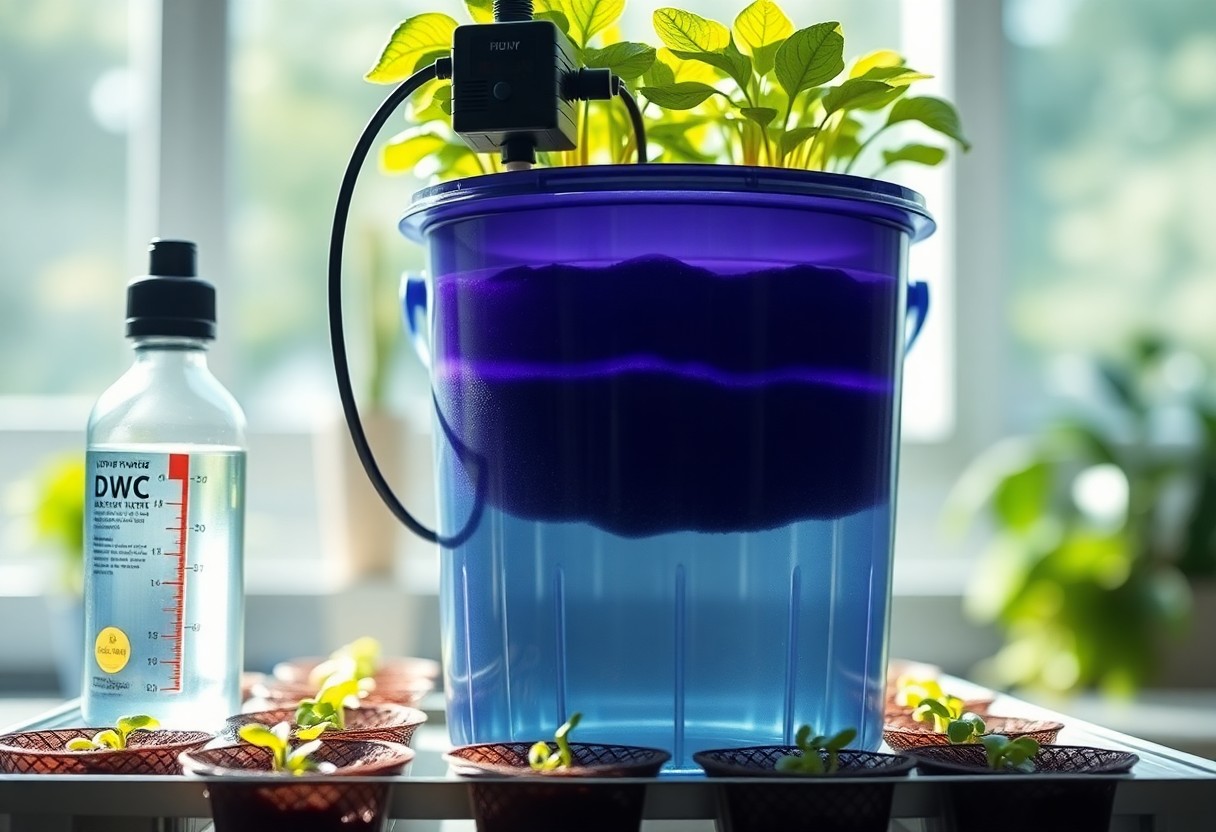
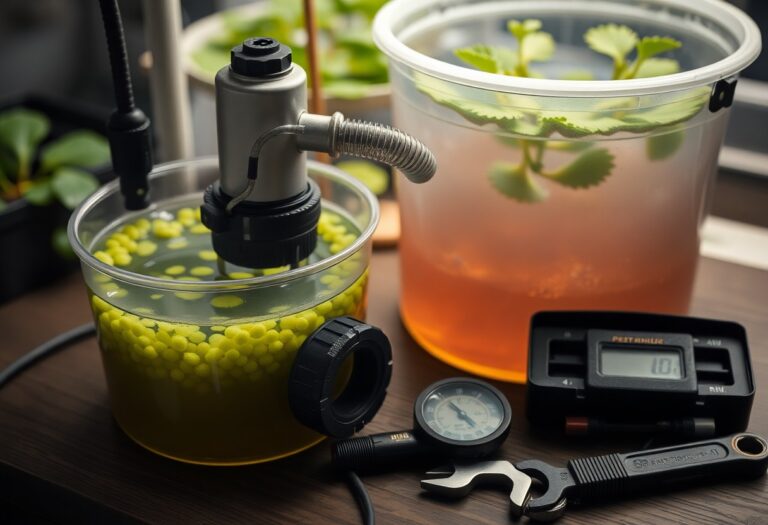
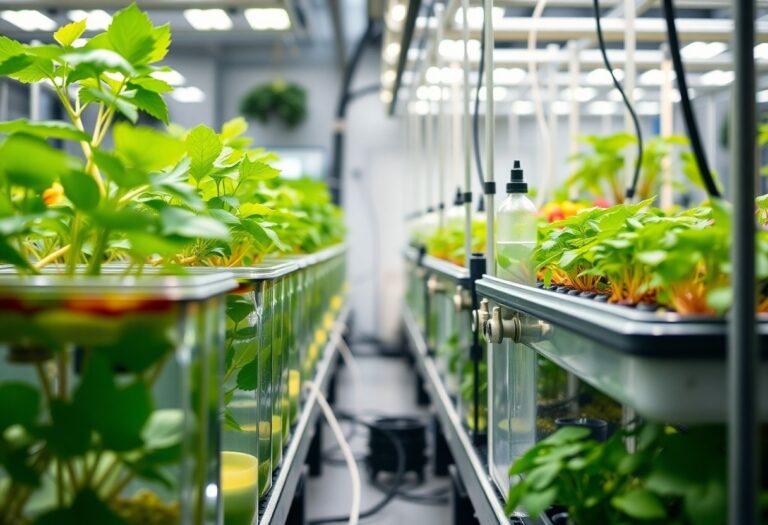


Leave a Comment